The Sash worn by nobles of the Empire of Lumiaron can identify one's rank and house affiliation at a single glance, to those who know how to read the Sash. This item of clothing is sometimes called: The Blooded Sash or The Sash of the Blood as well.
The concept of the Sash was brought to the Blutben by the Consang people who wore the Sash to indicate that they were Habieurs, magic users. The Consang and the Tribal people of the Blutben unified into one people over time and this resulted in the embroidered badges of the Tribes being added to the Sashes of nobles, as the nobility of the Blutben were now exclusively of Consang heritage and were all Habieurs.
At first, the two badges, one indicating kingdom, one indicating family, were worn at the shoulder and the hip of the Sash respectively and were called Heart's Badge and Sword Badge. That which you love, that which you are willing to die for.
After Claudin unified the kingdoms into the Empire of Lumiaron and the kingdoms became Duchies, the sword badge was moved up to be a smaller badge under the heart's badge, rather than being two distinct badges.
Someone who is exiled from their barony / county / duchy is stripped of their badge, but not their sash. Someone who is exiled from the Empire is stripped of their sash.
This sash would be worn by the Baron of Somfaux of the family of du Mamel. He is married and holds no military rank other than his baronial noble rank. He hails from the Duchy of Etendulat and his magic is restricted to habi.
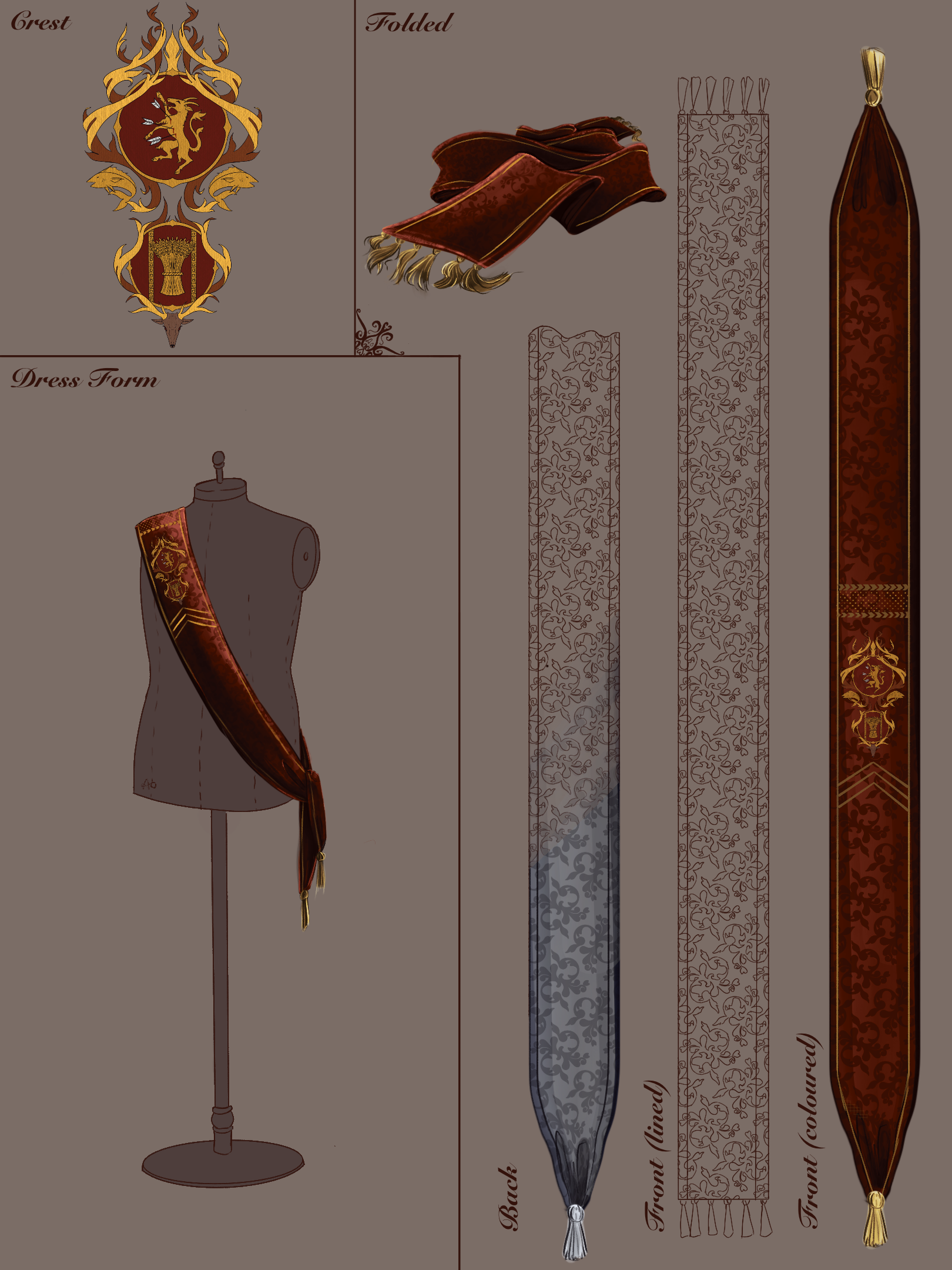
by Daya Avery
Cloth Base
The Sash is made from a heavy cloth base that is dyed as follows:
-
Sitting Duke (or the Emperor): Purpure (Purple)
-
Sitting Count: Murrey (Mulberry)
-
Sitting Baron: Sanguine (Blood Red)
Any other noble: the shade of their primary Ducal association:
Borders and Tassels
The borders and patterns of the Sash indicate the blooded status in the house.
A close kin blood relative of the sitting noble, such as a son, is indicated with a hatching pattern on the edge of the sash in the color of the sitting noble (purpure for dukes, mulberry for counts, sanguine for barons).
The designated heir of the sitting noble will have their noble color striped with the color of their house.
In the ducal houses, passing the Trials of Dusang is indicated by replacing one of the tassels which are in the color of the house with a Gules (red) tassel.
Sometimes a person who is sharing the status of their spouse (they took the sash) will display their original house colors in their tassels.
Ranks & Titles
Coat of Arms
On each Sash, there are 2 embroidered badges. The one is the coat of arms of the duchy to which the wearer belongs, the other is the coat of arms of their noble house. The coat of arms may sometimes be altered to fit onto the smaller badge. This is known as the Sash Badge. For most houses, the Sash Badge and the Coat of Arms are the same, but occasionally there might be variation. All variation must be approved under the Heraldic Rules of the Bardic Guild.
The one badge is larger and is referred to as the Heart's Badge. This badge is indicative of the part of your heritage which you feel closest to.
The other badge smaller, sown below the Heart's Badge and is referred to as the Sword’s Badge. This is indicative of the part of your heritage you would fight to the death for.
The coat of arms is governed by the
Heraldry of the Empire of Lumiaron.
Noble Ranks
Noble ranks are indicated by ordinary insignia embroidered beneath the heart’s badge.
- Duke - Saltire Parted Fretty
-
Marquis - Fret Couped
-
Earl - Fret
-
Count - Triple Chevrons
-
Viscount - Double Chevrons
-
Baron - Triple Chevronels
-
Chevalier - Single Chevronel
Military Ranks
Chevaliers especially can hold military rank beyond their noble rank indicative of battlefield command or honors. These ranks are indicated by additional ordinary charges below their noble rank.
- Lieutenant - two palets
-
Captain - two bends
-
General - three bars
The sash indicates the rank and house of nobility, as well as military rank. Any person who wears a sash has to be capable of wielding habi magic.
A noble might be exiled from the lands of their birth, but they would retain their right to the sash, however they would no longer display the coat-of-arms of their house. If they found work with a guild, they might add the guild badge to their sash to show their allegiance.
The lord did climb the hill,
Him and his sash and his thousand men.
But his sash was stained, stained red with blood.
And so his people threw him down.
And the lord never went up again.
- Lumiaron Nursery Rhyme
Item type
Clothing / Accessory
Rarity
Use of this article of clothing by those who do not hold the appropriate rank carries a penalty of twenty lashes. Impersonation of the rank of Duke carries the death penalty.
Dimensions
15cm in breadth, long enough to be comfortably draped across the shoulder in length.
Spouses
After the marriage, the partner who is "getting married" (also called: taking the sash) will get a sash that matches that of the partner who got married (also called: giving the sash). The partner who takes the sash will wear the sash on their left shoulder.
Marriage is indicated with an Or (gold) hatching pattern upper border of the sash.
Should a partner who took the sash be widowed without children, they return to their family and their old sash. Should they be widowed with children, they retain their marriage sash, but replace the Or hatching with Sable hatching. Should a partner who gave the sash be widowed, they may add sable (black) hatching where they previously had gold hatching to indicate their mourning for a partner.
Children
Children of nobles go by the generic title of lord or lady and use the sash of their parent with gules (red) chevron hatching on the borders until they reach the age of majority when they are given their own sash. Children also wear their sash from the left shoulder, not the right. During the ceremony of majority, the child will receive their sash from their lord to be worn from the right shoulder. Children who pass the trials of dusang get a Gules tassel.
Behind the Sash
Each castle has a special Sash Hook that indicates the noble quarters in the castle. Anyone whose quarters are located behind the Sash Hook is noble and is said to be "behind the Sash". A peasant therefore lives "before the Sash". A peasant may work "behind the Sash" if they are appointed to work directly beneath a noble.
Without the Sash
A noble who is in public without his Sash is considered to be not a noble. In such a case, no insult can be taken by that noble if they are not recognized or treated in accordance with their rank. If they are without their Sash, their actions are also not accrued to their House during this time and none may seek recompense from the House for actions taken by a noble who wears no Sash. In some parts of the Empire it is considered to be a gaff to acknowledge someone as noble if they don't wear their Sash. This does not hold true in the North, which is considered something of a backwater by the rest of the Empire.
A Sash Duel
A sash duel is a no-holds-barred duel to the death. It is fought by nobles and always initiated with the words: "You are not worthy of your Sash and I will strip you of it." These words are said while holding out your own tassels to show that you are willing to risk your life and honor to prove your words true. A sash duel is typically fought as soon as the challenge is issued, as long as the participants have the permission of their respective lieges. One may only challenge down the noble ladder, not up. So a Marquis may challenge a Baron, but a Count may not challenge a Duke.
The only way to avoid fighting in a sash duel is:
- Your liege refuses you permission to fight, this carries the implication that they don't think you would win, but you are too valuable to risk; or
- You cut off your own sash, return it to your liege and leave the lands you are currently in as a penniless outlaw peasant
Should a liege refuse their subject permission to duel, the matter under dispute is considered unresolved and the liege owes the other party of the duel a boon as compensation for denying them satisfaction. The liege would be required to wear a tassel in the color of the victor until the boon is delivered. These boons are called "Tassel Boons" and may be traded between nobles.
The winner of the duel will cut off the sash of the loser and return it to the liege of the loser. In return, he will be given the tassels from the loser's sash to keep as a trophy.
This has resulted in the sayings:
- Tassel collector: Someone who has killed often in duels.
-
To the victor go the tassels: The winner is the one who is in the right.
-
He wouldn't risk his tassels: He has no honor, he is a coward.
Hatching Patterns
Hatching patterns are used in place of colors in order to ensure that the Sash doesn't turn into rainbow. The hatching used by the Empire Heralds are detailed below:
The Sash Explained
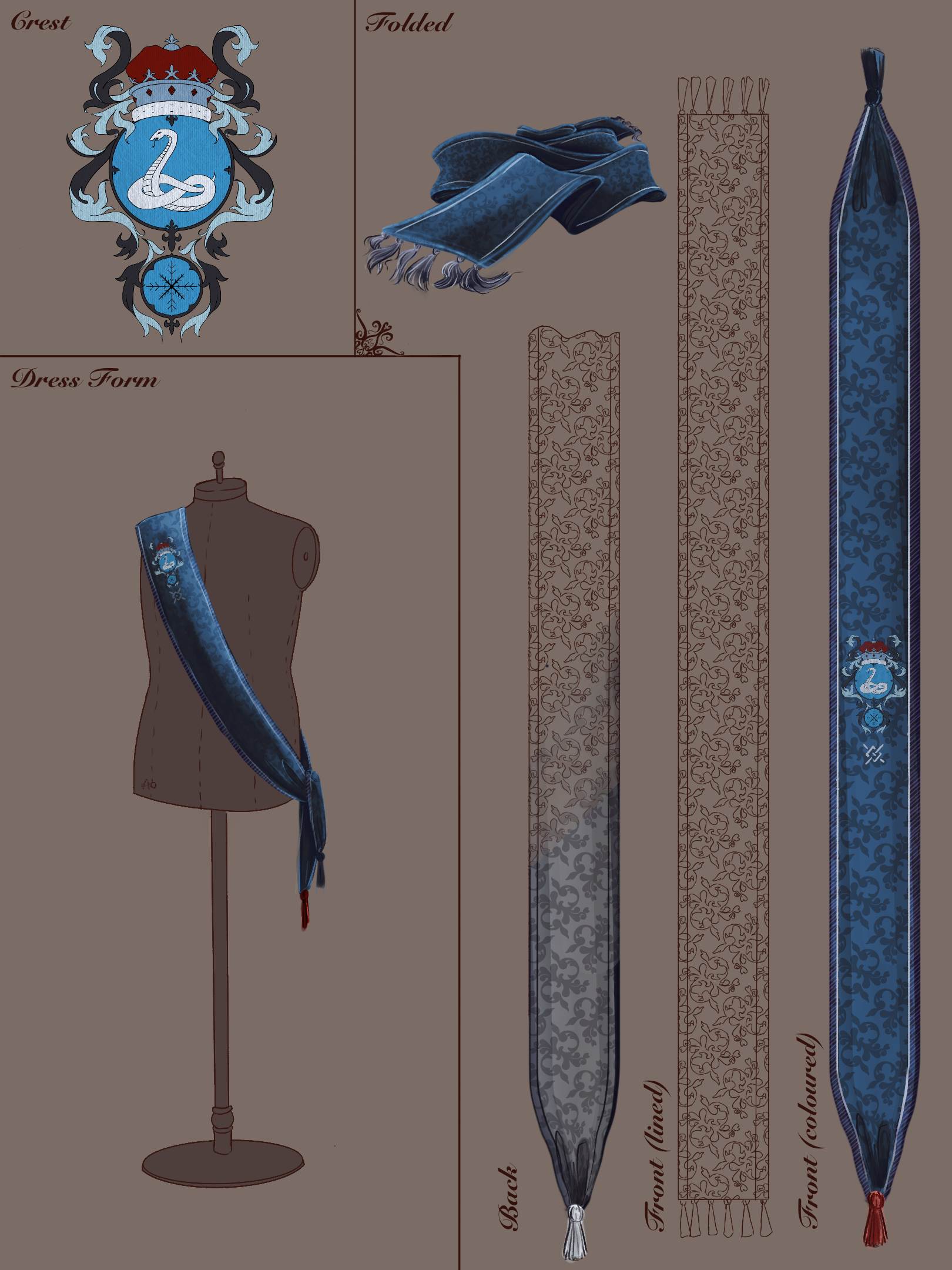
by Daya Avery
Purpure Hatching Border: The wearer is a close blood relative of the incumbent Duchess of Laroche.
Gules Tassel: The wearer has passed the dangerous Trials of Dusang and is capable of using dusang magics
Crest: The wearer is a member of de la Roche family and hails from Laroche Duchy.
Fret Couped: The wearer holds the noble rank of Marquis














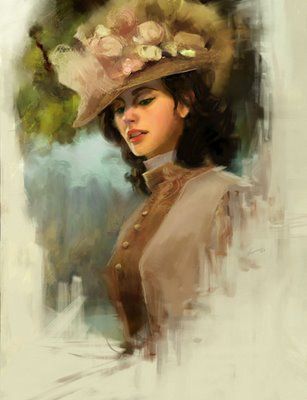



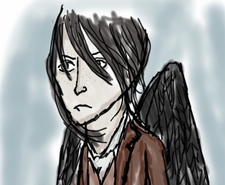

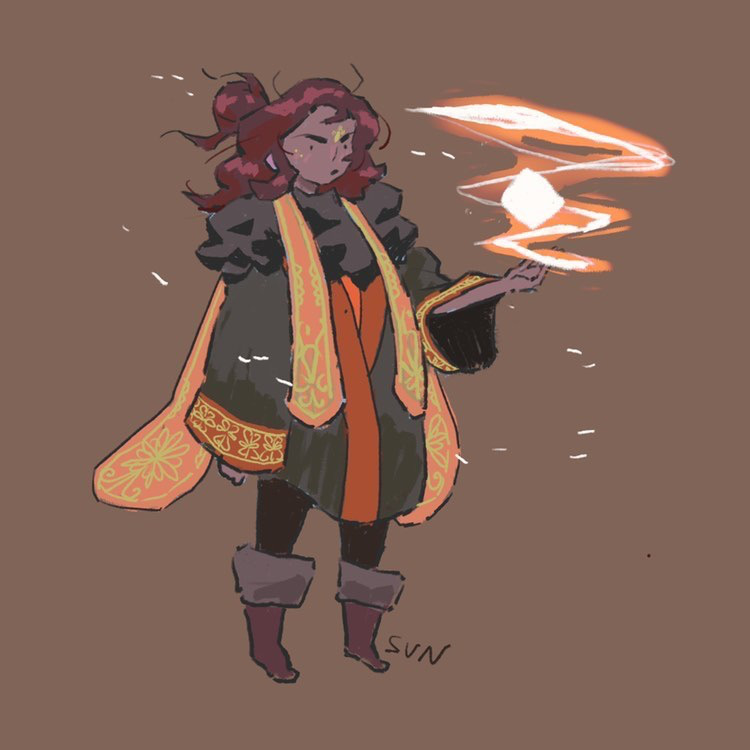

Interesting article. I would only recommend giving some explanation about the types of duchies
If you are looking for my Worldember articles check Magic Earth or My Worldember Progress Page
Thanks :). The notes for the duchies are currently all mixed up with spoilers which is why I haven't added them to world anvil yet! I'll try to get it done before the competition closes!